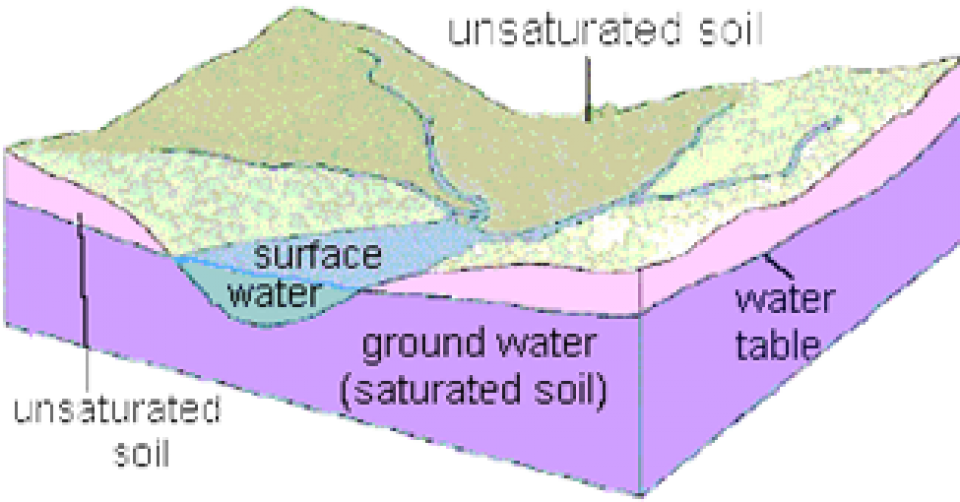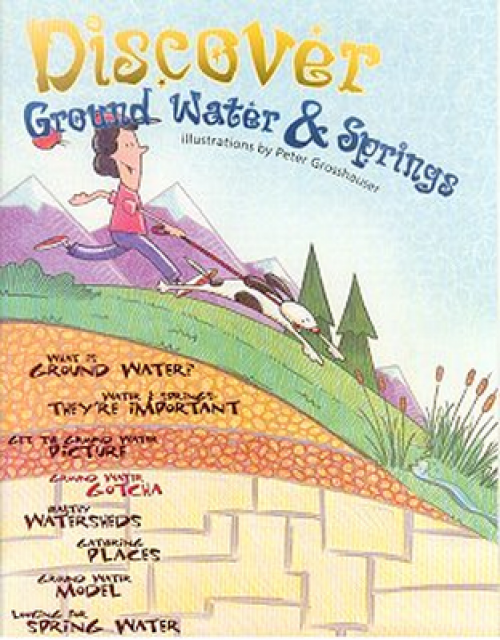Surface Water vs. Groundwater
The nation’s surface-water resources—the water in the nation’s rivers, streams, creeks, lakes, and reservoirs—are vitally important to our everyday life. The main uses of surface water include drinking-water and other public uses, irrigation uses, and for use by the thermoelectric-power industry to cool electricity-generating equipment.
Groundwater is an important part of the water cycle. Groundwater is the part of precipitation that seeps down through the soil until it reaches rock material that is saturated with water. Water in the ground is stored in the spaces between rock particles (no, there are no underground rivers or lakes). Groundwater slowly moves underground, generally at a downward angle (because of gravity), and may eventually seep into streams, lakes, and oceans.
Here is a simplified diagram showing how the ground is saturated below the water table (the purple area). The ground above the water table (the pink area) may be wet to a certain degree, but it does not stay saturated. The dirt and rock in this unsaturated zone contain air and some water and support the vegetation on the Earth. The saturated zone below the water table has water that fills the tiny spaces (pores) between rock particles and the cracks (fractures) of the rocks.










